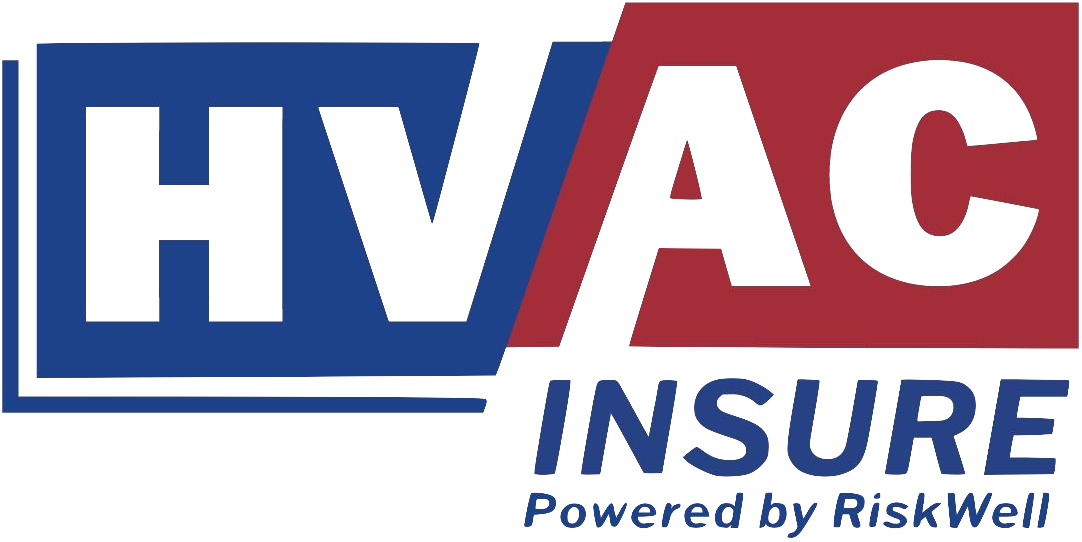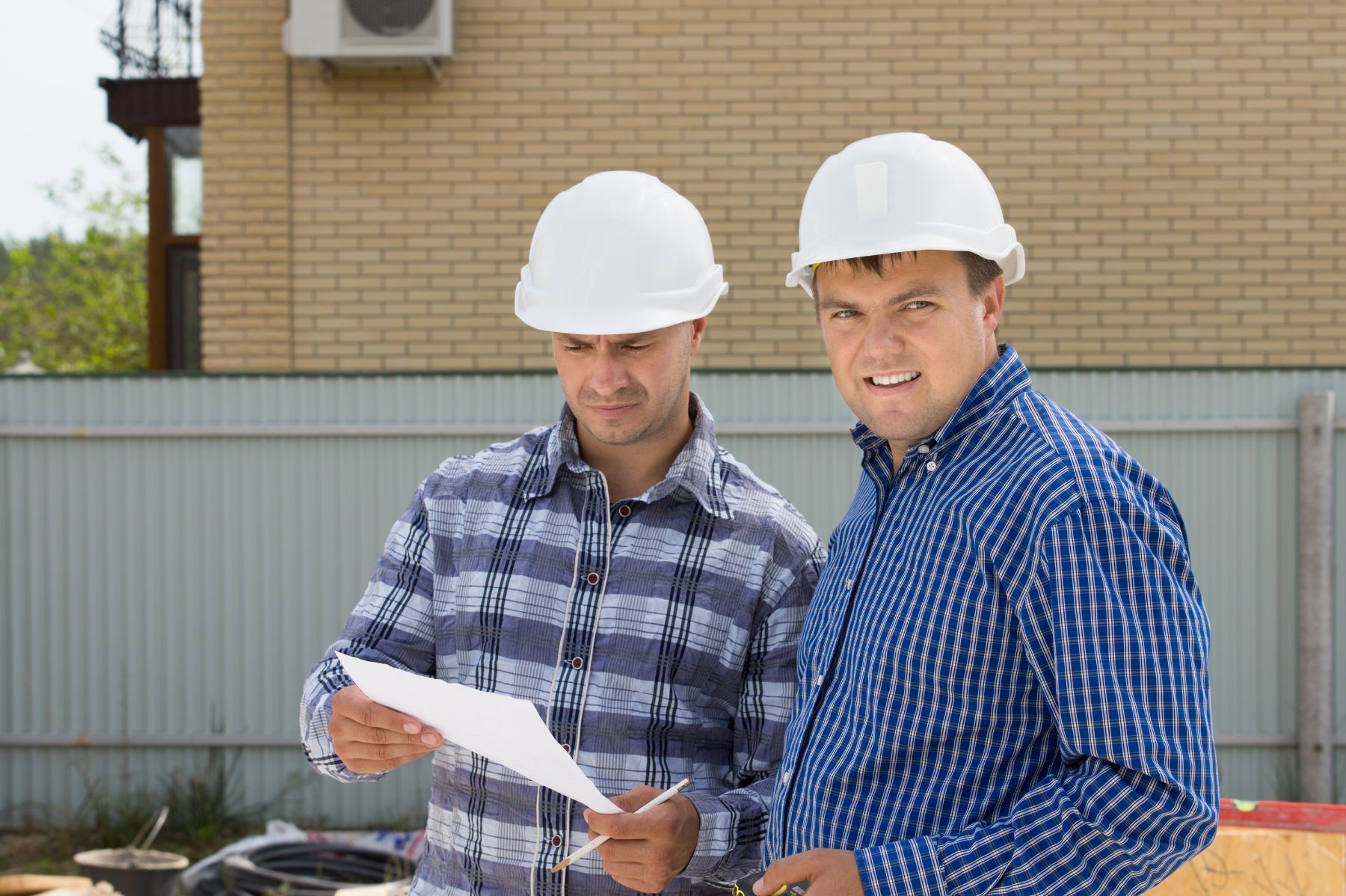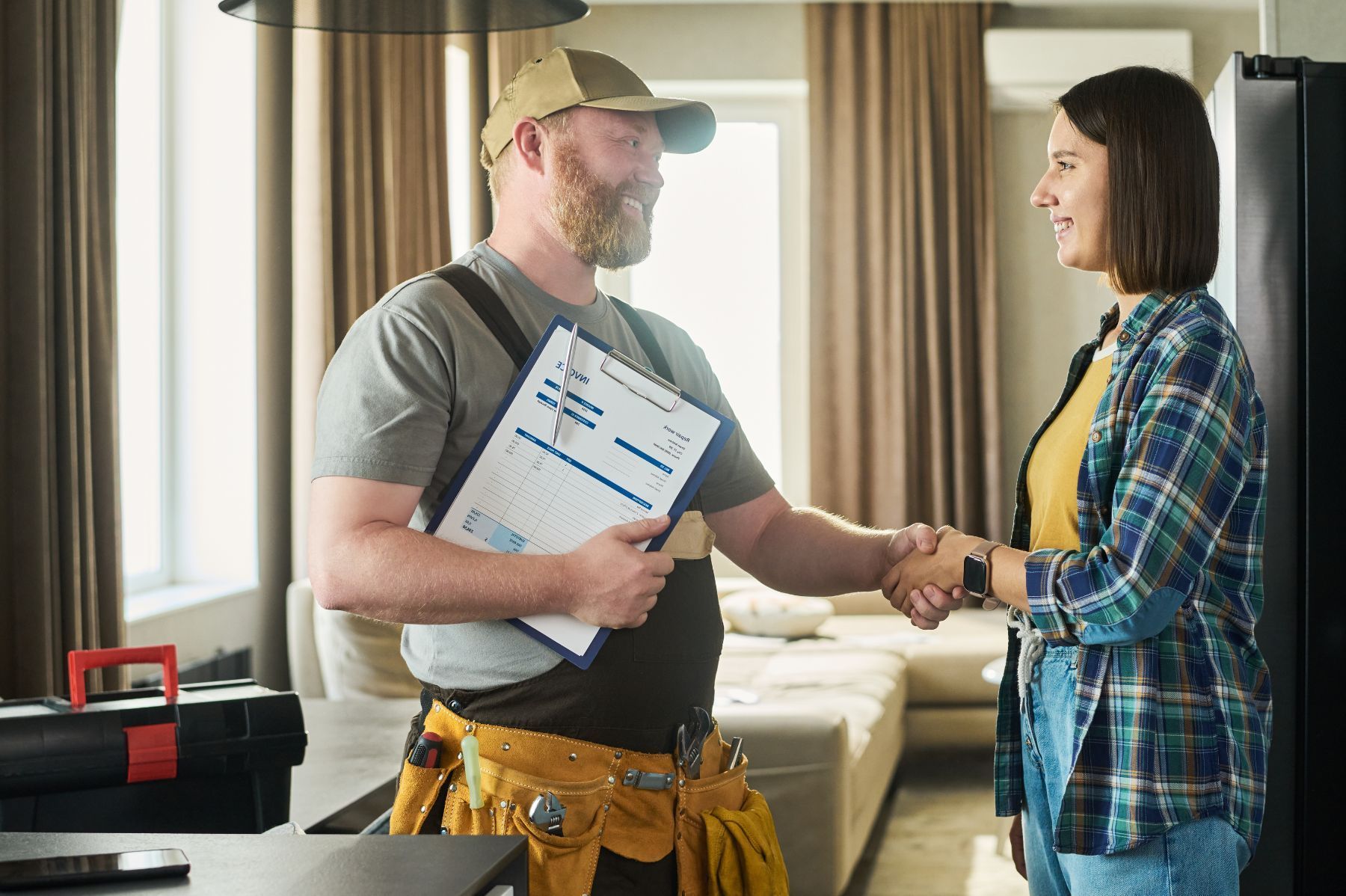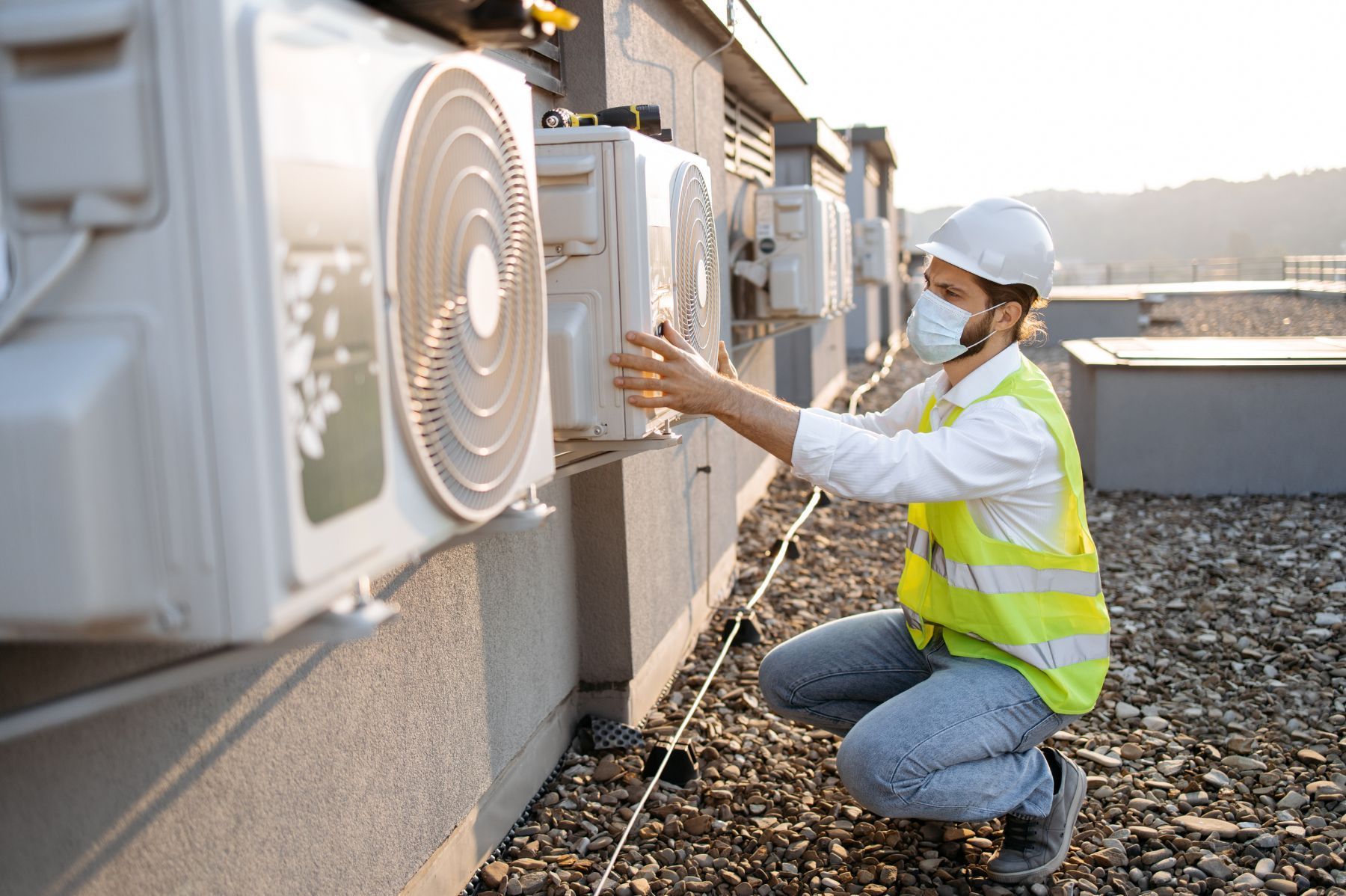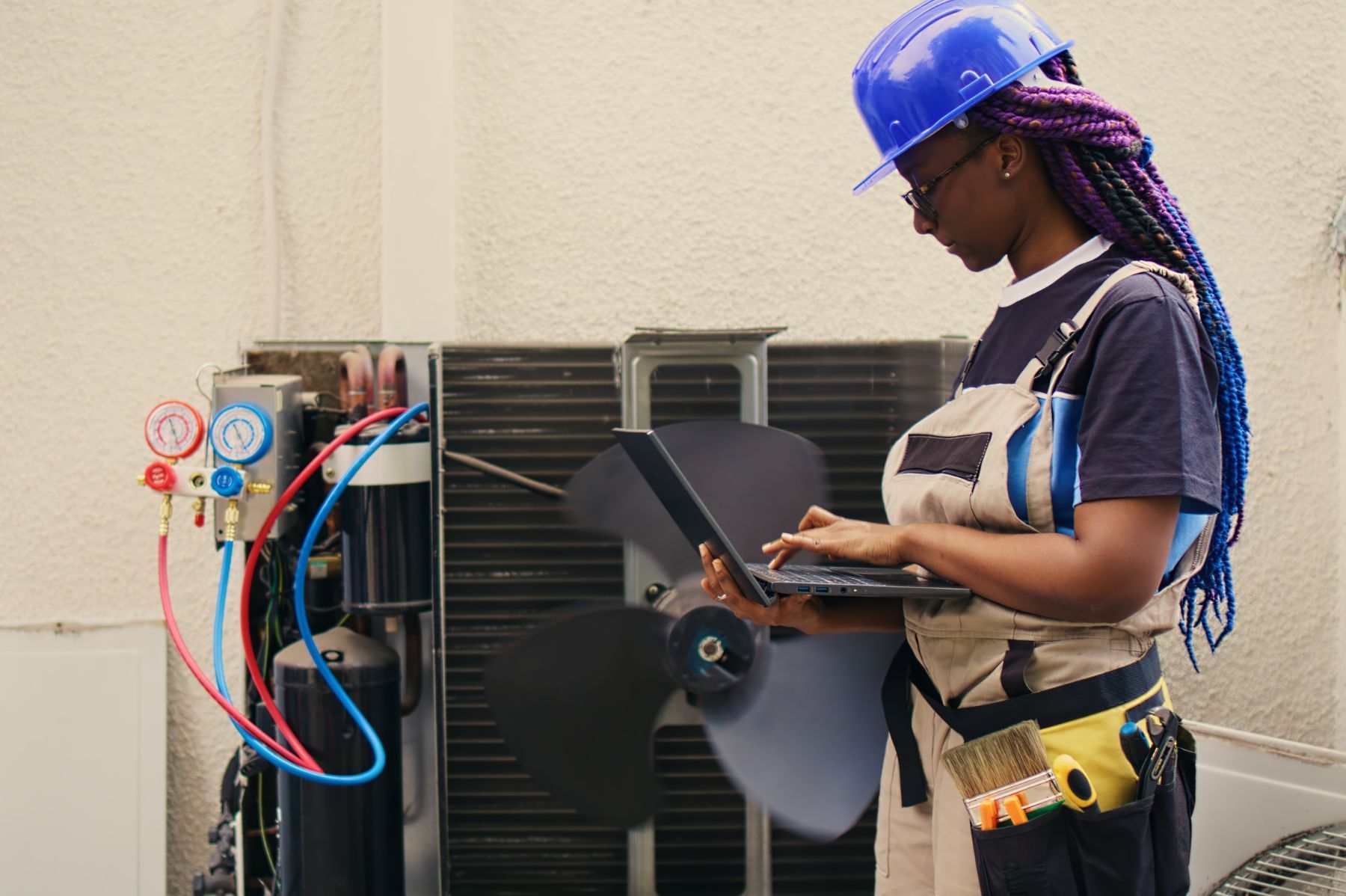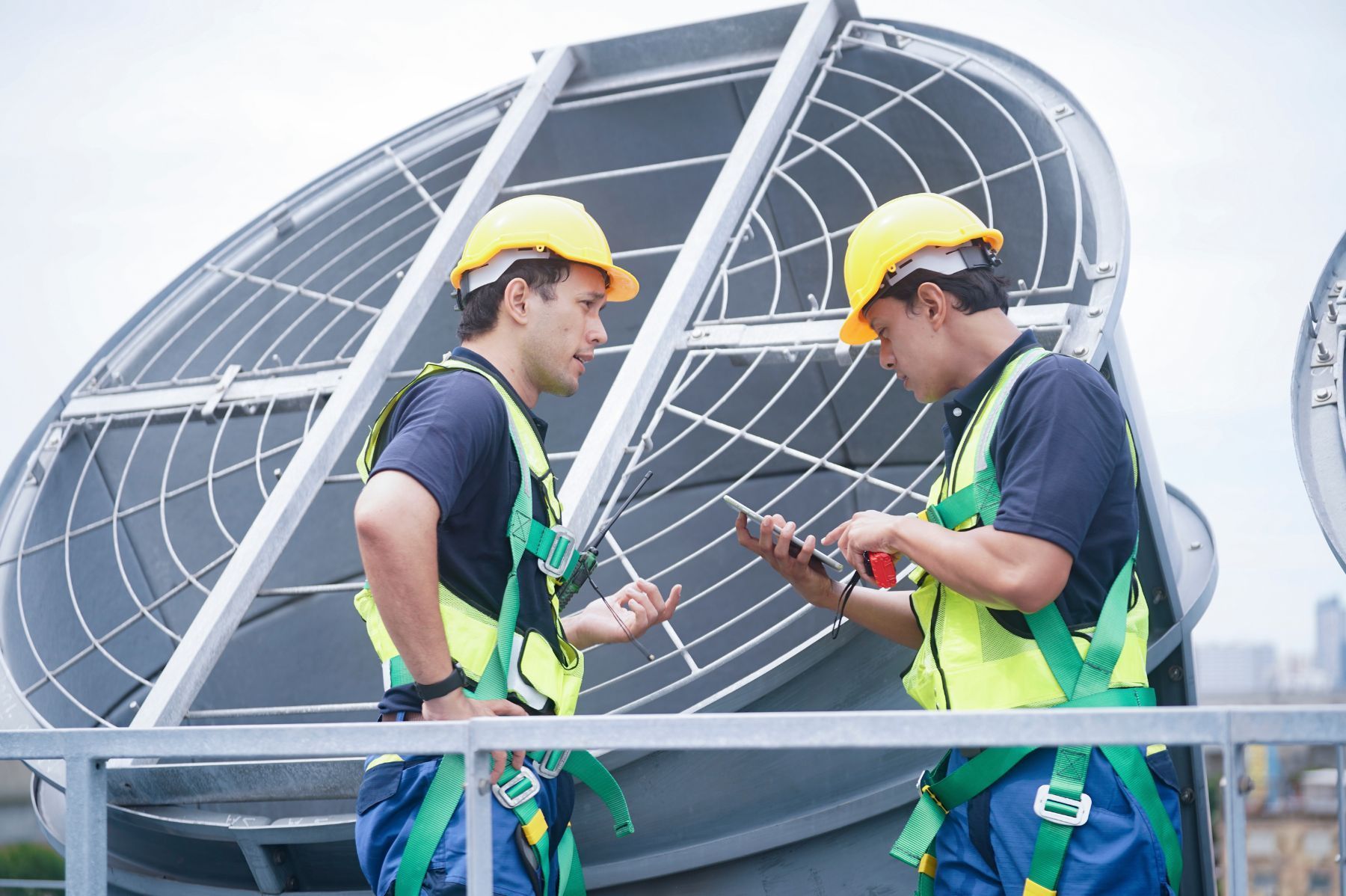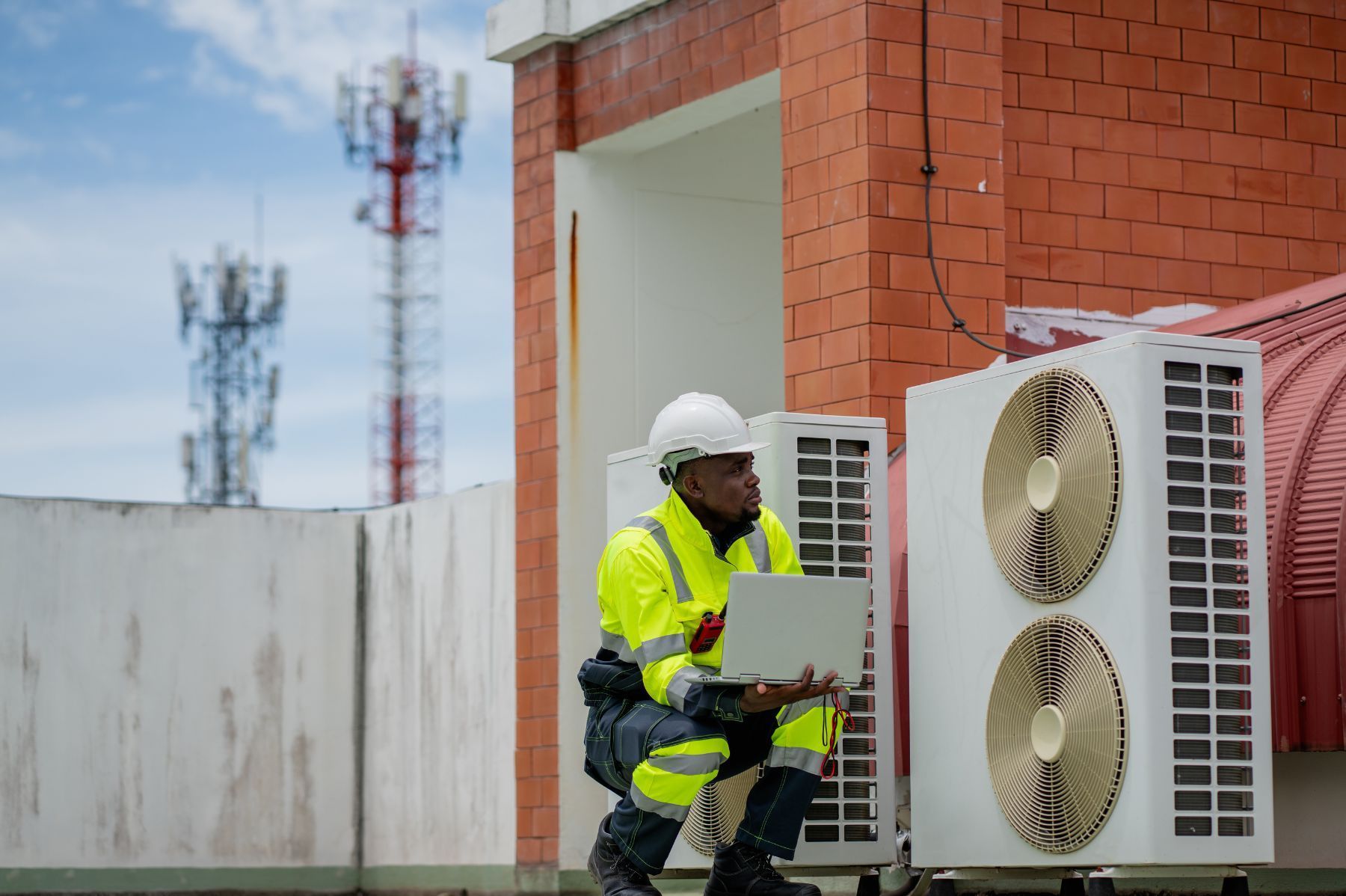How Renewable Energy Growth Is Affecting HVAC Contractor Risk
See How We're Different
or call us: (469) 678-8001

Clean energy is reshaping the way HVAC contractors operate, presenting fresh opportunities and new risks. The U.S. clean energy sector added 100,000 jobs in 2024 alone, growing three times faster than the overall workforce. This rapid expansion signals a shift toward energy-efficient technologies that HVAC professionals must navigate carefully. Understanding these changes is crucial for contractors who want to protect their businesses while capitalizing on the industry's momentum. Bob Keefe, Executive Director of E2, described clean energy as one of the hottest job sectors at the end of 2024, underscoring the scale of this transformation.
The Rising Role of Energy Efficiency in HVAC
Energy efficiency is no longer an optional feature for HVAC systems - it’s a regulatory and market-driven necessity. Recent updates from the U.S. Department of Energy now require central air conditioners in southern states to meet a Seasonal Energy Efficiency Ratio (SEER) of 15, while northern states must comply with a SEER rating of 14. These standards push contractors to install and maintain systems that consume less energy and reduce environmental impact.
This shift means HVAC contractors must stay current with evolving codes and technology. Failure to meet these standards can lead to costly rework, fines, or liability claims. At the same time, energy-efficient systems are driving industry growth, with the global HVAC market expected to reach $367.5 billion by 2026. This growth is largely fueled by demand for greener, smarter heating and cooling solutions that align with renewable energy goals. Ken Research highlights the importance of these efficiency upgrades in shaping market dynamics.
For contractors, this means more complex installations and maintenance tasks. Integrating renewable energy sources like solar or geothermal with HVAC systems requires specialized skills and careful planning. These complexities increase the risk of installation errors, equipment damage, or client dissatisfaction if not managed properly. Moreover, as consumers become more environmentally conscious, they are increasingly seeking out HVAC solutions that not only promise energy savings but also contribute to a sustainable future. This shift in consumer behavior is prompting HVAC professionals to enhance their knowledge and expertise in energy-efficient technologies, ensuring they can meet the evolving expectations of their clientele.
Additionally, the rise of smart home technologies is further transforming the HVAC landscape. Smart thermostats and IoT-enabled devices allow homeowners to monitor and control their energy consumption in real-time, optimizing their HVAC systems for maximum efficiency. These advancements not only improve comfort but also provide valuable data analytics that can inform future upgrades and maintenance schedules. As the industry adapts to these technological innovations, HVAC contractors must embrace continuous education and training to remain competitive, ensuring they can effectively integrate these smart solutions into their service offerings. The convergence of energy efficiency, technology, and consumer demand is reshaping the HVAC sector, driving it towards a more sustainable and innovative future.
Renewable Energy Integration and Contractor Liability
Renewable energy communities, such as those studied in Flanders, demonstrate how shared solar and wind power can reduce electricity costs by 10 to 26 percent compared to traditional setups. As these models gain traction in the U.S., HVAC contractors are often the frontline professionals responsible for integrating these systems with existing infrastructure.
While the cost savings for consumers are clear, the technical challenges for contractors grow. Coordinating HVAC systems with renewable energy sources demands precise calibration to avoid grid instability or equipment failure. A recent study on residential HVAC control schemes found that predictive controls can reduce energy draw by 12 percent and mitigate voltage fluctuations by 20 percent, illustrating the potential benefits of advanced system management. However, these sophisticated controls also increase the stakes for contractors who must ensure proper installation and programming.
Contractor liability rises when renewable integrations fail or cause property damage. Mistakes in system compatibility or wiring can lead to costly repairs and legal claims. This risk is compounded by the fact that HVAC systems account for roughly half of all energy consumption in commercial buildings, making any malfunction a serious issue. Research on renewable energy communities and studies on HVAC control highlight both the promise and complexity of these integrations.
Moreover, the evolving landscape of energy regulations and incentives further complicates the contractor's role. As government policies increasingly favor renewable energy adoption, contractors must stay informed about local, state, and federal guidelines that can affect project feasibility and compliance. For instance, tax credits and rebates for solar installations can significantly influence project costs, but they also require meticulous documentation and adherence to specific installation standards. This necessitates a robust understanding of both the technical and regulatory environments, as contractors navigate the intricacies of financing and incentives while ensuring that installations meet all legal requirements.
Additionally, the integration of renewable energy sources into HVAC systems is not only a technical challenge but also an opportunity for innovation. Contractors who embrace these advancements can differentiate themselves in a competitive market by offering cutting-edge solutions that enhance energy efficiency and sustainability. Training programs and certifications focused on renewable technologies are becoming increasingly important, equipping contractors with the skills necessary to implement these systems effectively. As the demand for green building practices grows, those who invest in their education and adapt to new technologies will be better positioned to thrive in this transforming industry.
Market Growth and Business Risks for HVAC Contractors
The clean energy boom is a double-edged sword for HVAC contractors. On one hand, the surge in demand for energy-efficient and renewable-integrated systems offers a chance to expand services and revenue. On the other hand, it introduces new risks related to installation complexity, regulatory compliance, and client expectations.
Charlie Hadlow, President and COO of EnergySage, reflects on these challenges by emphasizing the industry's resilience: “These realities remind me of how proud I am to be part of an industry and company that continue to overcome such hurdles to address climate change, help millions of Americans save money with renewable energy, and enable contractors to grow their businesses.” This optimism is well-founded but requires contractors to adapt quickly and manage risks proactively.
Contractors must invest in ongoing training to handle new technologies safely and effectively. Insurance policies may need updating to cover emerging risks such as system integration failures or cyber vulnerabilities linked to smart HVAC controls. Without proper risk management, contractors could face increased claims, delays, and reputational damage.
Moreover, the integration of advanced technologies like IoT (Internet of Things) and AI (Artificial Intelligence) into HVAC systems presents both opportunities and challenges. These technologies can enhance system efficiency and provide predictive maintenance capabilities, but they also require contractors to be well-versed in the latest software and hardware. As systems become more interconnected, the potential for cybersecurity threats increases, necessitating a robust understanding of data protection measures. HVAC contractors must not only focus on the physical installation of these systems but also on the digital landscape that accompanies them, ensuring that both their clients' data and their own business information remain secure.
Additionally, the evolving regulatory landscape surrounding energy efficiency and emissions standards can pose significant challenges. HVAC contractors must stay informed about local, state, and federal regulations that impact their work. This includes understanding incentives for renewable energy installations, which can vary widely by region and may require contractors to navigate complex paperwork on behalf of their clients. By staying ahead of these regulatory changes, contractors can position themselves as trusted advisors, helping clients make informed decisions while also ensuring compliance. This proactive approach not only mitigates risks but can also enhance customer satisfaction and loyalty, ultimately driving long-term business growth.
Practical Steps to Mitigate Risk Amid Renewable Growth
Adapting to the renewable energy landscape means more than just technical know-how. HVAC contractors should take a holistic approach to risk management that includes:
- Staying informed on regulations: Understanding DOE efficiency standards and local codes helps avoid compliance issues.
- Specialized training: Gaining expertise in renewable energy system integration and advanced control technologies reduces installation errors.
- Clear client communication: Setting realistic expectations about system capabilities and maintenance needs prevents disputes.
- Insurance review: Ensuring coverage includes new risks related to renewable energy and smart system failures.
- Quality control: Implementing rigorous testing and verification protocols before project handoff.
These steps align with industry trends and help contractors build trust with customers while safeguarding their businesses. The HVAC market’s projected growth to $367.5 billion by 2026 means plenty of opportunity, but only for those who manage risk effectively. Industry reports confirm that half of commercial energy use comes from HVAC systems, so the stakes remain high.
As the demand for energy-efficient solutions escalates, contractors must also embrace innovative technologies that enhance system performance. This includes the integration of IoT devices that allow for real-time monitoring and predictive maintenance, which can significantly reduce downtime and improve customer satisfaction. By leveraging data analytics, HVAC professionals can identify patterns in system performance, enabling them to preemptively address potential issues before they escalate into costly repairs.
Moreover, engaging in partnerships with renewable energy providers can open new avenues for business growth. Collaborating with solar panel installers or wind energy firms not only diversifies service offerings but also positions HVAC contractors as comprehensive energy solution providers. This synergy not only enhances the contractor's marketability but also fosters a more sustainable approach to energy consumption, appealing to environmentally conscious consumers who prioritize green technologies in their purchasing decisions.
Looking Ahead: The Future of HVAC and Renewable Energy
As renewable energy becomes more embedded in building systems, HVAC contractors will play a critical role in shaping sustainable infrastructure. Emerging technologies like predictive control schemes and community energy models will continue to evolve, requiring agility and expertise from contractors. These advancements are not just about integrating solar panels or wind turbines; they also involve sophisticated energy management systems that optimize energy use in real-time, ensuring that buildings operate at peak efficiency.
Those who embrace innovation while managing the associated risks will thrive. The clean energy sector’s rapid job growth shows a clear demand for skilled professionals who can deliver efficient, reliable, and integrated HVAC solutions. Contractors who prepare now will benefit from this expanding market while avoiding pitfalls that come with complexity. Furthermore, as energy storage solutions, such as advanced battery systems, become more prevalent, HVAC contractors will need to understand how to integrate these technologies into existing systems, creating a seamless energy ecosystem that enhances building performance.
Ultimately, the intersection of renewable energy and HVAC is driving a fundamental change in how buildings consume power. Contractors who understand this shift and adapt accordingly will not only reduce their risk exposure but also contribute to a greener future. The integration of smart technologies, such as IoT devices, allows for real-time monitoring and adjustments, enabling HVAC systems to respond dynamically to changing environmental conditions. This level of responsiveness not only improves energy efficiency but also enhances occupant comfort, making buildings more livable and sustainable.
Moreover, as regulations around energy efficiency tighten and public awareness of climate change grows, the demand for sustainable HVAC solutions will only increase. Contractors will find themselves at the forefront of this transformation, tasked with educating clients about the benefits of renewable energy integration and the long-term cost savings associated with energy-efficient systems. This educational role will be crucial, as many building owners may be hesitant to invest in new technologies without a clear understanding of their value. By fostering strong relationships with clients and providing comprehensive guidance, HVAC contractors can position themselves as trusted advisors in this evolving landscape.
Frequently Asked Questions
Q: How do new energy efficiency standards affect HVAC contractors?
A: Updated DOE standards require higher SEER ratings, meaning contractors must install more efficient systems and stay current with regulations to avoid penalties. This shift not only impacts the types of units that can be installed but also necessitates a deeper understanding of the technologies involved. Contractors may need to invest in new tools and training to ensure they are equipped to handle these advanced systems effectively. Additionally, as consumers become more aware of energy efficiency, contractors who can demonstrate compliance with these standards may find themselves at a competitive advantage, attracting eco-conscious clients.
Q: What risks come with integrating renewable energy into HVAC systems?
A: Integration increases complexity, raising risks of installation errors, system incompatibility, and potential liability if systems fail or cause damage. The challenge lies in ensuring that traditional HVAC systems can work harmoniously with renewable energy sources such as solar panels or wind turbines. Contractors must have a thorough understanding of both HVAC technology and renewable energy systems to mitigate these risks. Furthermore, the potential for unforeseen issues during installation or operation can lead to costly repairs and dissatisfied customers, making it crucial for contractors to conduct comprehensive assessments before integration.
Q: Why is ongoing training important for HVAC contractors?
A: Training ensures contractors can handle advanced technologies safely and comply with evolving standards, reducing mistakes and liability. As the HVAC industry continues to innovate, with the introduction of smart technologies and automation, staying updated through continuous education becomes essential. This not only enhances the skill set of contractors but also fosters trust with clients who expect knowledgeable professionals to manage their HVAC systems. Moreover, ongoing training can lead to certifications that enhance a contractor's credibility and marketability, ultimately contributing to business growth.
Q: How can HVAC contractors protect their businesses amid these changes?
A: Contractors should update insurance policies, implement quality control, communicate clearly with clients, and stay informed on industry trends. By proactively addressing potential risks and ensuring that all aspects of their operations are up to date, contractors can safeguard their businesses against unforeseen challenges. Additionally, establishing strong relationships with suppliers and manufacturers can provide access to the latest technologies and resources, further enhancing their service offerings. Engaging in community outreach and education can also position contractors as industry leaders, fostering goodwill and attracting new clients.
Q: What role do predictive controls play in HVAC energy savings?
A: Predictive controls can reduce energy consumption by optimizing system operation and minimizing grid fluctuations, improving efficiency and reliability. These advanced systems utilize data analytics and machine learning to anticipate heating and cooling needs, allowing for more precise control over energy use. By implementing predictive controls, HVAC systems can adapt to real-time conditions, leading to significant cost savings for both contractors and clients. Furthermore, as energy prices fluctuate, the ability to optimize energy consumption can provide a competitive edge in the market.
Q: Are renewable energy communities relevant to HVAC contractors?
A: Yes. These communities require HVAC systems to integrate smoothly with shared renewable resources, increasing technical demands on contractors. As more neighborhoods and developments embrace sustainable practices, the need for HVAC professionals who can navigate the complexities of these systems becomes paramount. Contractors may find opportunities to collaborate with other trades, such as electricians and solar installers, to create comprehensive solutions that meet the unique needs of renewable energy communities. This collaborative approach not only enhances service offerings but also positions contractors as integral players in the transition toward sustainable living.
